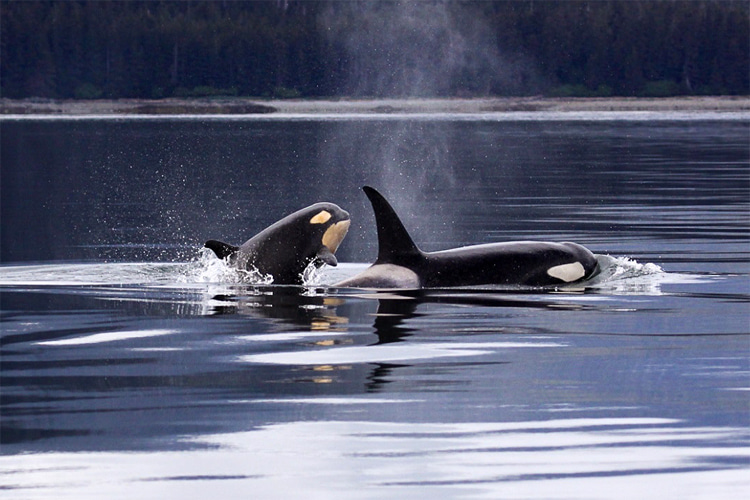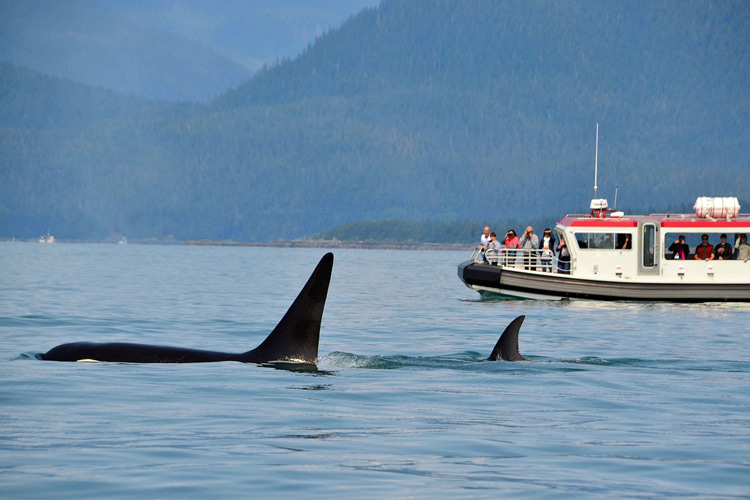A peculiar trend has swept the waters near the Iberian Peninsula since the spring of 2020.
The region's orcas, also known as killer whales, have begun to carry out an increasing number of unprecedented and startling attacks on boats and yachts.
The Strait of Gibraltar, in particular, has witnessed a surge in these incidents.
The Iberian orca subpopulation, considered critically endangered, currently consists of only 39 animals, according to the last full census conducted in 2011.
This subpopulation follows the migration of their key prey, Atlantic bluefin tuna, a route that puts them in close contact with human fishing, military activities, and recreational boating.
Researchers fear the boat attacks will come back to bite the orcas, either because boaters will retaliate or because the attacks are dangerous to the animals themselves.

The Orca Encounters
Reports of these orca encounters started to appear with no obvious explanation.
Pods of killer whales, known scientifically as Orcinus orca, began to interact aggressively with vessels, pushing some off course, causing others to spin in their wake, and inflicting significant damage in some cases.
In over 500 documented instances, the orcas have caused a range of damage, from minor scratches to destructive strikes on vessels' rudders, even leading to three boats sinking.
These encounters are not always brief.
The attacks typically last less than 30 minutes, but some have stretched to up to two hours.
In one case, two juvenile killer whales went after the rudder while an adult repeatedly rammed the boat. One of the attacks lasted 90 minutes.
This peculiar series of events has gained considerable global attention, spurred on by eye-catching video footage of the incidents captured by stunned seafarers.
Yet, the unusual behavior of the killer whales has left both spectators and scientists baffled.

Hunting the Answers
Researchers from the Atlantic Orca Working Group (GTOA), which monitors the Iberian killer whale population, have been puzzling over the rise in such aggressive behavior, which is largely unheard of in other parts of the world.
Alfredo López, an orca researcher at GTOA, outlined two potential explanations.
One hypothesis suggests that this could be a new "fad" among killer whales, similar to cultural trends observed in humans.
The other speculates that these attacks could be a reaction to a past traumatic experience involving a boat.
It's important to note that these speculations are not unfounded. Orcas, as members of the dolphin family, are known for their high intelligence, social behavior, and capacity for learning.
Consequently, the notion that these actions might be a cultural fad isn't as far-fetched as it may initially seem.
In fact, this wouldn't be the first time orcas have adopted unusual behavior trends.
In 1987, members of the Southern Resident orcas in Washington's Puget Sound began wearing dead salmon on their heads, a behavior that spread through the population before disappearing a few months later.
Probing the Past
Yet, the theory that these orcas could be reacting to trauma also warrants serious consideration.
Notably, in the case of an adult female orca named White Gladis, who was present in many of the attacks, researchers speculate that a past entanglement in a fishing line could have given her a negative association with boats.
The evidence of injuries consistent with boat collisions or entanglement in other adult orcas in the region further bolsters this hypothesis.
It highlights the indirect yet profound impact human activities can have on these marine creatures.
Dismissing the Revenge Narrative
Despite the intense social media speculation that frames these events as a revenge saga against humanity, most researchers, including Deborah Giles of Wild Orca, have dismissed this narrative.
Giles highlighted the historical lack of wild orca aggression towards humans, despite the long history of their exploitation by humans for marine parks and whaling.
Instead, Giles suggests that the orcas' interaction with boats might stem from curiosity or intrigue towards the sound, vibration, or water movements caused by the vessels.
The Road Ahead
Regardless of the cause, these incidents pose a significant threat to both the boats and the orcas themselves.
It is feared that continuous engagement in these behaviors might result in injuries to the orcas or trigger human retaliation.
Efforts are now being directed towards non-traumatic deterrent strategies that would discourage the orcas from approaching the vessels.
These techniques could involve playing sounds that the orcas find irritating, such as the calls of pilot whales or creating loud noises underwater.
For the time being, the saga of the boat-attacking orcas of the Strait of Gibraltar remains a captivating mystery.
As scientists continue their efforts to understand and address this issue, it serves as a reminder of the complex and often unpredictable ways in which marine life can interact with human activities.
